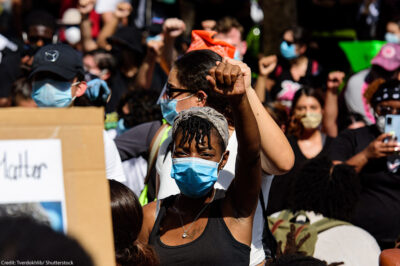NYCLU Releases RNC Documents That City Tried to Conceal
FOR IMMEDIATE RELEASE
CONTACT: media@aclu.org
NEW YORK – The New York Civil Liberties Union today made public reams of documents and dozens of hours of video about the New York Police Department’s policing of the 2004 Republican National Convention. The release follows a federal judge’s ruling last month that New York City could not stop the NYCLU from sharing the documents with the public.
“The public has a right to see these documents,” said NYCLU Executive Director Donna Lieberman. “The court recognized that democracy dies behind closed doors, and today we carry out that court’s mandate to keep it alive.”
The judge’s ruling came in connection with the NYCLU’s two post-RNC lawsuits challenging mass arrests and detentions during the 2004 Republican National Convention. The documents and videos were obtained by the NYCLU in pre-trial discovery. New York City said the documents in question were secret and could not be shared; the NYCLU countered that there was nothing sensitive about the documents and that they should be part of the public record. The judge, James C. Francis IV, ruled on the side of the NYCLU. The city did not appeal.
The documents illuminate the how the 2004 Republican National Convention was policed. Highlights include:
• The Pier 57 NYPD Officer Medical Reports, which were filed with the NYPD’s own medical division by 40 of the NYPD’s own officers. NYPD complainants (whose names are redacted) report that they were exposed to various harmful substances – including asbestos, carbon monoxide, unidentified fumes, and an unidentified black liquid – while assigned to Pier 57 during the convention. The reports indicate that protesters’ concerns about conditions of detention at Pier 57 were shared by the officers assigned to the area.
• The RNC No-Summons Memo of May 4, 2004, which announces that NYPD officers would not give summonses to protesters during the convention, instead arresting and fingerprinting them. This policy caused lengthy detentions of demonstrators; without it, 1,500 of the 1,800 arrestees would have been eligible for summons and quick release.
• The RNC Arrest-to-Arraignment Charts, which show that RNC arrestees were arraigned much more slowly than non-RNC arrestees during the week of the convention. The charts raise troubling questions as to why protesters arrested for minor offenses were being held much longer than people arrested for serious crimes during the convention.
The documents are available on the NYCLU’s website at: www.nyclu.org/rncdocs
Stay Informed
Every month, you'll receive regular roundups of the most important civil rights and civil liberties developments. Remember: a well-informed citizenry is the best defense against tyranny.


